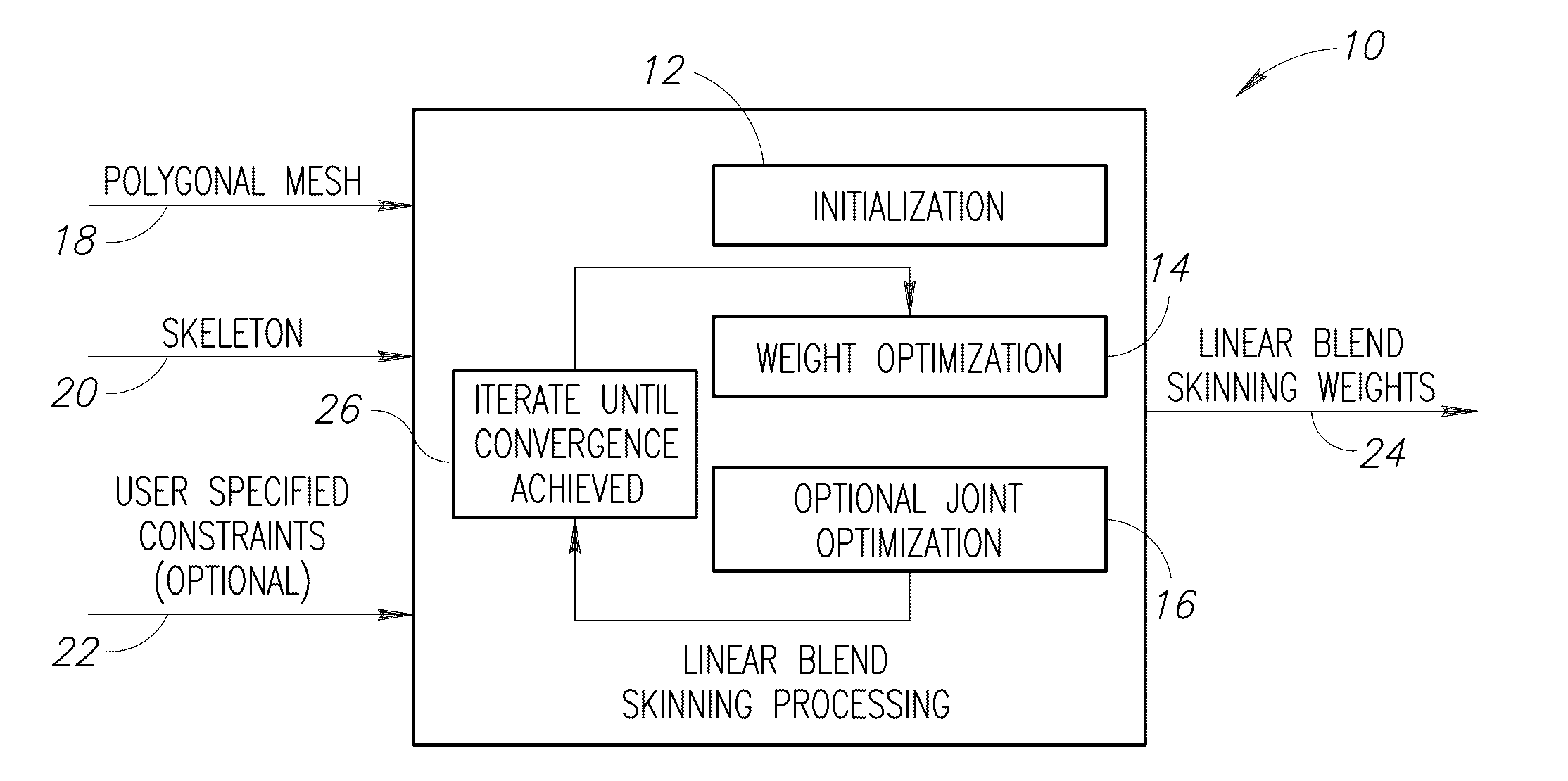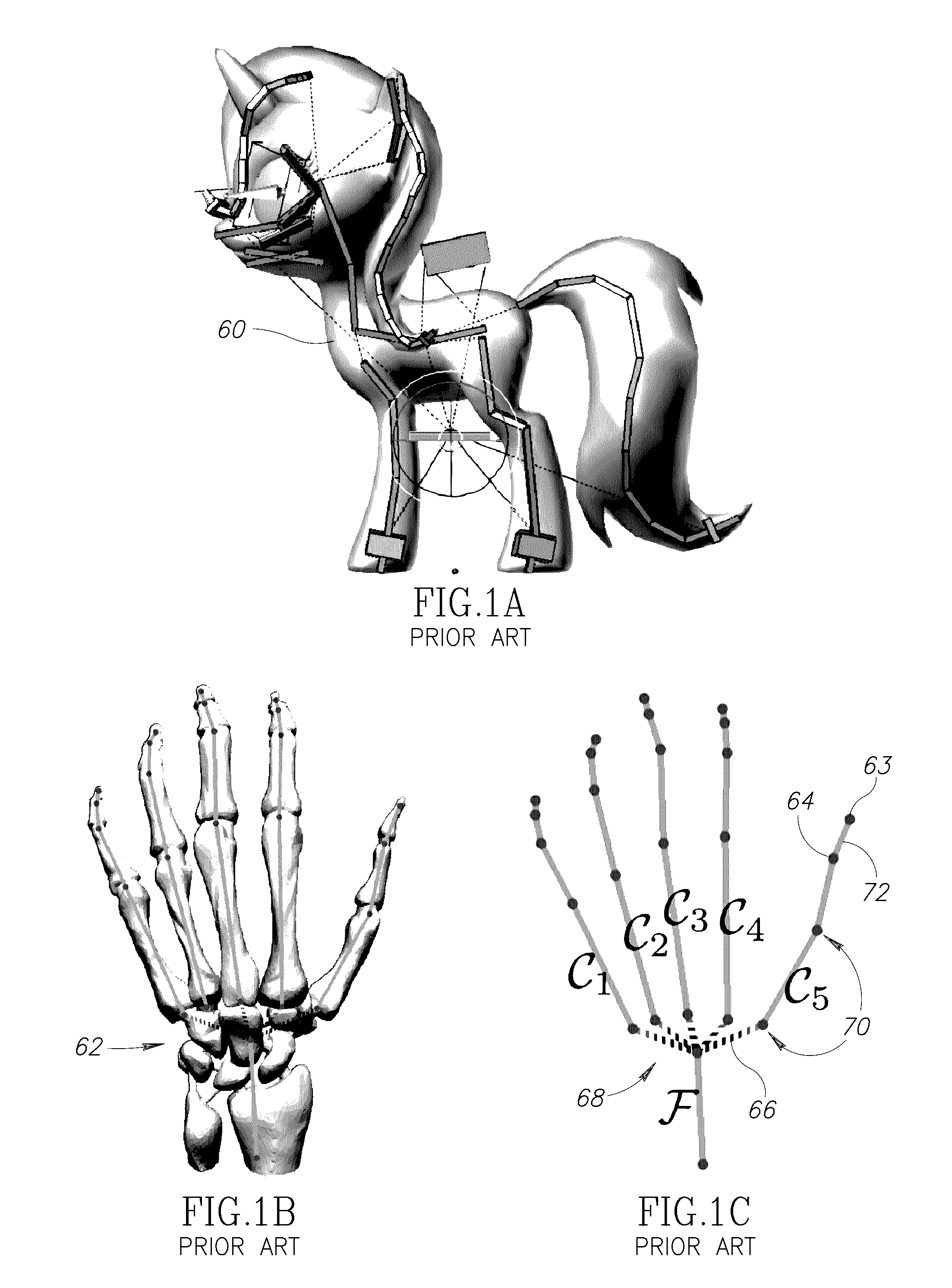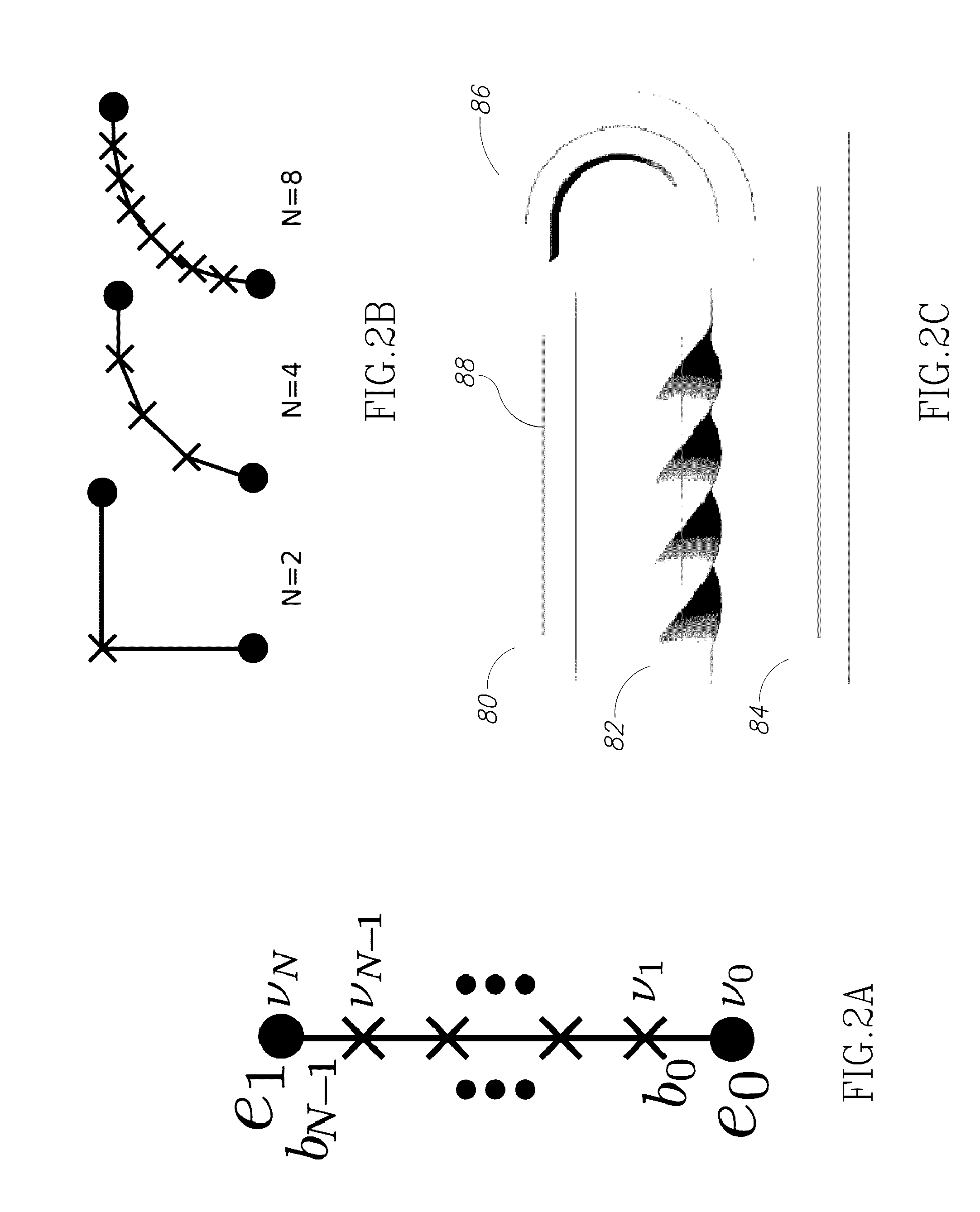Linear Blend Skinning Weight Optimization Utilizing Skeletal Pose Sampling
a skeletal pose and weight optimization technology, applied in the field of computer graphics, can solve the problems of tedious steps of prior art approaches, and achieve the effect of reducing bone influence and improving computational efficiency
- Summary
- Abstract
- Description
- Claims
- Application Information
AI Technical Summary
Benefits of technology
Problems solved by technology
Method used
Image
Examples
Embodiment Construction
1 Technical Basis
1.1 Skeleton Topology and Constraints
[0065]A skeleton as shown in FIGS. 1A, 1B and 1C is composed of skeletal vertices 63, 64, 70 and segments 66, 72, which are directed wire edges creating parent-child dependencies. Each segment consists of two vertices (for example segment 72 has vertices 64 and 63); an origin and a target along the segment's direction. Segments can be bones 72, whose transformations will have an influence on the mesh, or virtual segments, which are used to define parent-child relations between otherwise not directly connected bones. Virtual segments, e.g., 66, follow the deformations of the skeleton, but do not influence the mesh. Bones can have restrictions like maximal angles or imposed rotation axes.
1.2 Linear Blend Skinning (LBS) with Parameterized Bones
[0066]As explained supra, skinning is a standard technique in computer graphics for skeleton based animation that induces little computational overhead and has been used extensively in video g...
PUM
 Login to View More
Login to View More Abstract
Description
Claims
Application Information
 Login to View More
Login to View More - R&D
- Intellectual Property
- Life Sciences
- Materials
- Tech Scout
- Unparalleled Data Quality
- Higher Quality Content
- 60% Fewer Hallucinations
Browse by: Latest US Patents, China's latest patents, Technical Efficacy Thesaurus, Application Domain, Technology Topic, Popular Technical Reports.
© 2025 PatSnap. All rights reserved.Legal|Privacy policy|Modern Slavery Act Transparency Statement|Sitemap|About US| Contact US: help@patsnap.com



